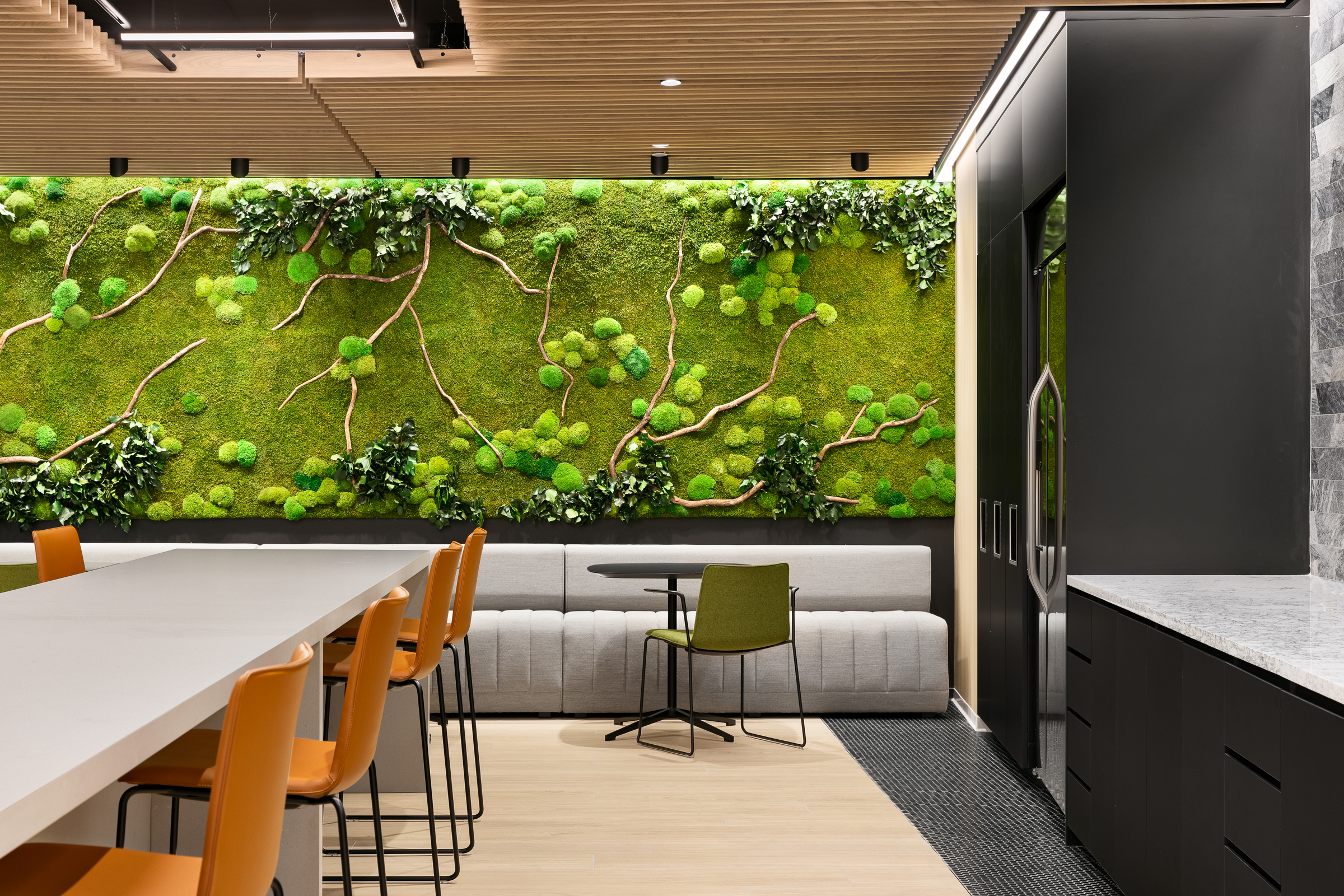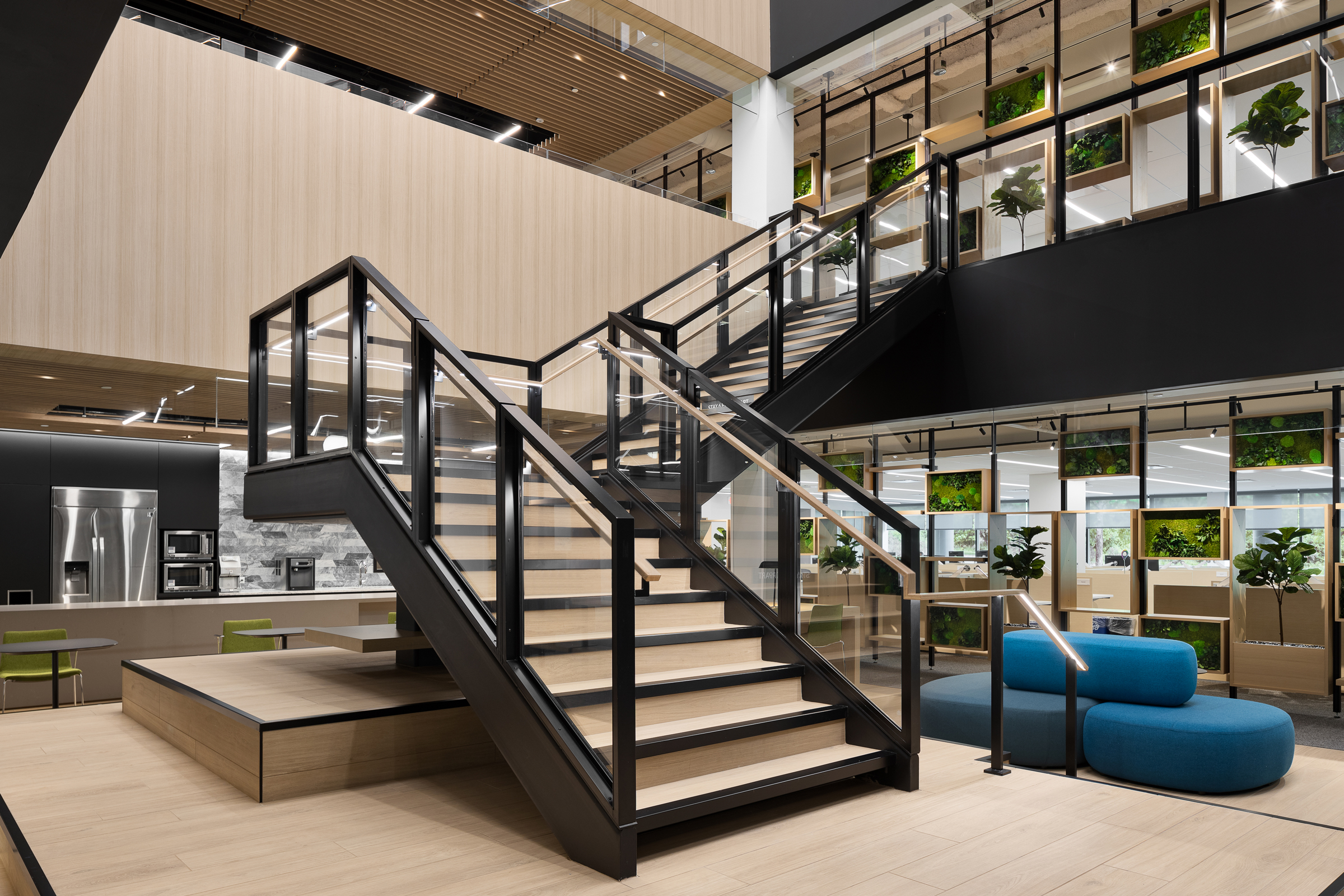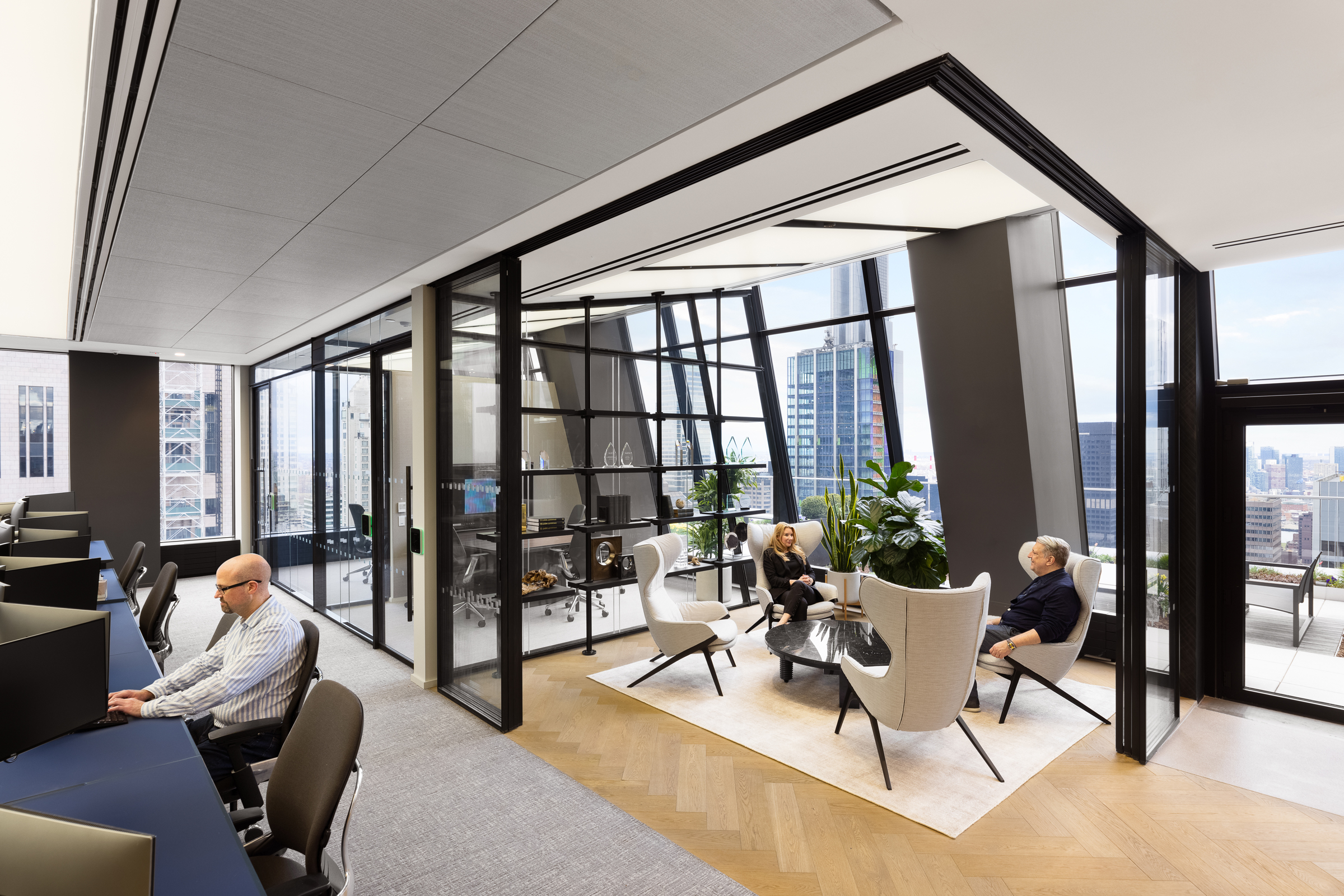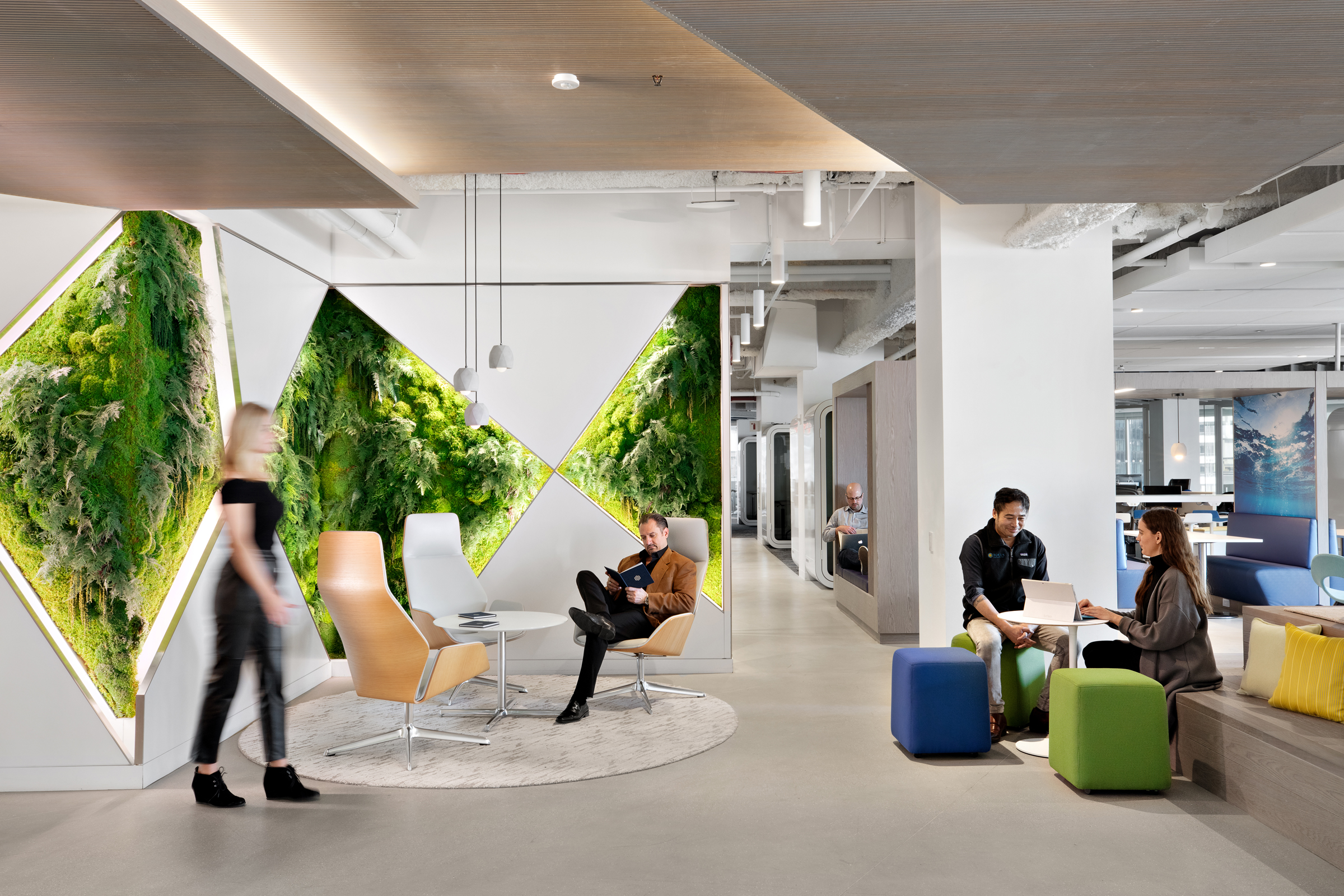Story at a glance:
- Biophilic design benefits not just employees, but companies, too.
- Adding indoor plants can improve overall indoor air quality.
- Designers can use images and patterns to mimic the aesthetic qualities of nature.
It’s no secret that the world of work is changing. Nearly 60% of US employees who say their jobs can mainly be done from home are working from home at least part of the time, and many corporations are looking for ways to attract their team members back to the office.
Whether through enticing office perks, hybrid work schedules, or making physical changes to the work environment, employers are finding new ways to enhance comfort, promote productivity, and create a space that workers truly want to work in. One method of advancing the conditions of the workplace is through strategic biophilic design.
Biophilia is the “love of life and living systems,” and biophilic design takes this concept into the built environment by incorporating natural elements through meaningful and impactful architecture and interior design practices.
The premise maintains that humans have an inborn need for contact with nature, and that this connection is essential to our health and well-being. Employers who prioritize wellness through workplace strategy and interior design will most commonly employ biophilic design by integrating living plants, natural materials, and organic shapes to their overall aesthetic and functional workplace experience.
The Benefits of Biophilic Design in the Workplace

Adding plants indoors can improve air quality. Photo courtesy of Ted Moudis Associates
Research shows that access to nature is essential to our physical and mental health as well as our overall well-being, which explains why biophilic design is such an important consideration for our interior environments. For example, access to nature or even viewing scenes of nature can reduce feelings of anger, fear, and stress and can increase positive feelings. In addition, implementing plants indoors has been proven to improve air quality and enhance the perception of interior spaces as benefitting our health and well-being.
The people who most benefit from biophilic design in the workplace are the workers themselves; however, by extension, there are many aspects of this strategy that positively impact the company, too. Some of the effects of incorporating it into the workplace include reduced absenteeism and mental fatigue, improved emotional satisfaction, and increased productivity, all of which directly contribute to the company’s bottom line. In essence, the benefits of investing in smart biophilic design helps boost employee wellness and financially aids the corporation.
How Biophilic Design Can Enhance the Workplace

Designers can use images of nature, a natural color palette, and biomorphic shapes and patterns to mimic aesthetic qualities of nature. Photo courtesy of Ted Moudis Associates
One misconception about biophilic interior design is that it is accomplished by merely adding a bunch of plants to an office space. The reality is that a holistic approach to biophilic design requires a commitment to a broader strategy. For interior designers, two main opportunities for implementing biophilic design are through building considerations, which are the inherent building characteristics, and design features, replicating physical properties and/or experiences of nature in a literal or representational way.
Building considerations entail a building’s orientation, its use of windows and skylights to increase natural lighting, and the strategic use of its existing structure or location to make the most of the surrounding environment. If a workplace is next to a park or body of water, for example, designers can create elements that overlook natural landscapes or in some way incorporate the natural surroundings. Another building consideration is indoor-outdoor space. While not necessarily easy to come by in many major cities, biophilic design features can take the form of incorporating an outdoor terrace or roof patio, creating spaces that encourage a building’s occupants to spend more time outdoors.
Natural design features can be used for either aesthetic or experiential purposes. These include what you might first think about when you picture biophilic design, literal natural elements like greenery and potted plants, or even fish tanks or office pets. Designers can also incorporate the use of living walls to provide a connection to nature. Other opportunities include raw, natural materials like wood and stone, water features, and live fire in fireplaces.
On the other hand, rather than literal natural features, representational physical properties of nature can take the form of displayed images of nature, a natural color palette, biomorphic shapes, patterns, and even circadian lighting. These design elements are meant to mimic aesthetic qualities of nature without actually using the real thing. Carefully selected earth tones in the furnishings and finishes, wood flooring or ceilings, organic patterns in carpeting, and the use of materials that age gracefully or patina over time all contribute to this approach.
Now is the Time for Biophilic Design at Work

A building’s orientation and its use of windows and skylights are important considerations in biophilic design. Photo courtesy of Ted Moudis Associates
At a time when companies are eager for employees to return to physical workplaces, corporations are embracing a renewed commitment to ensuring offices are welcoming to all demographics and are intentionally designed with sustainability and wellness in mind for building occupants.
The pandemic has brought about an increased public knowledge and awareness of how the built environment can impact our health and happiness. As such, employees are looking for companies that reflect their own personal values, provide a better work-life balance, and maintain a work environment they can enjoy and find fulfillment in.
But even before the pandemic there was a shift in how corporations, public offices, and educational institutions think about the spaces we inhabit—a thought process spurred by the growing focus on wellness among the interior design industry. The trend has had a notable impact on corporate design as more business leaders recognize how crucial it is to promote human health and well-being and their positive impacts on the bottom line.
As the world of work continues to evolve and corporations seek new ways to better engage the workforce and nurture an atmosphere that marries productivity and well-being, biophilic design will continue to be an integral focus. The emerging strategy gives some indication on where the future of workplace design is headed and is a testament that direct connections with nature shouldn’t be seen as an option, but as a proven method for improving the health and happiness of our teams.




